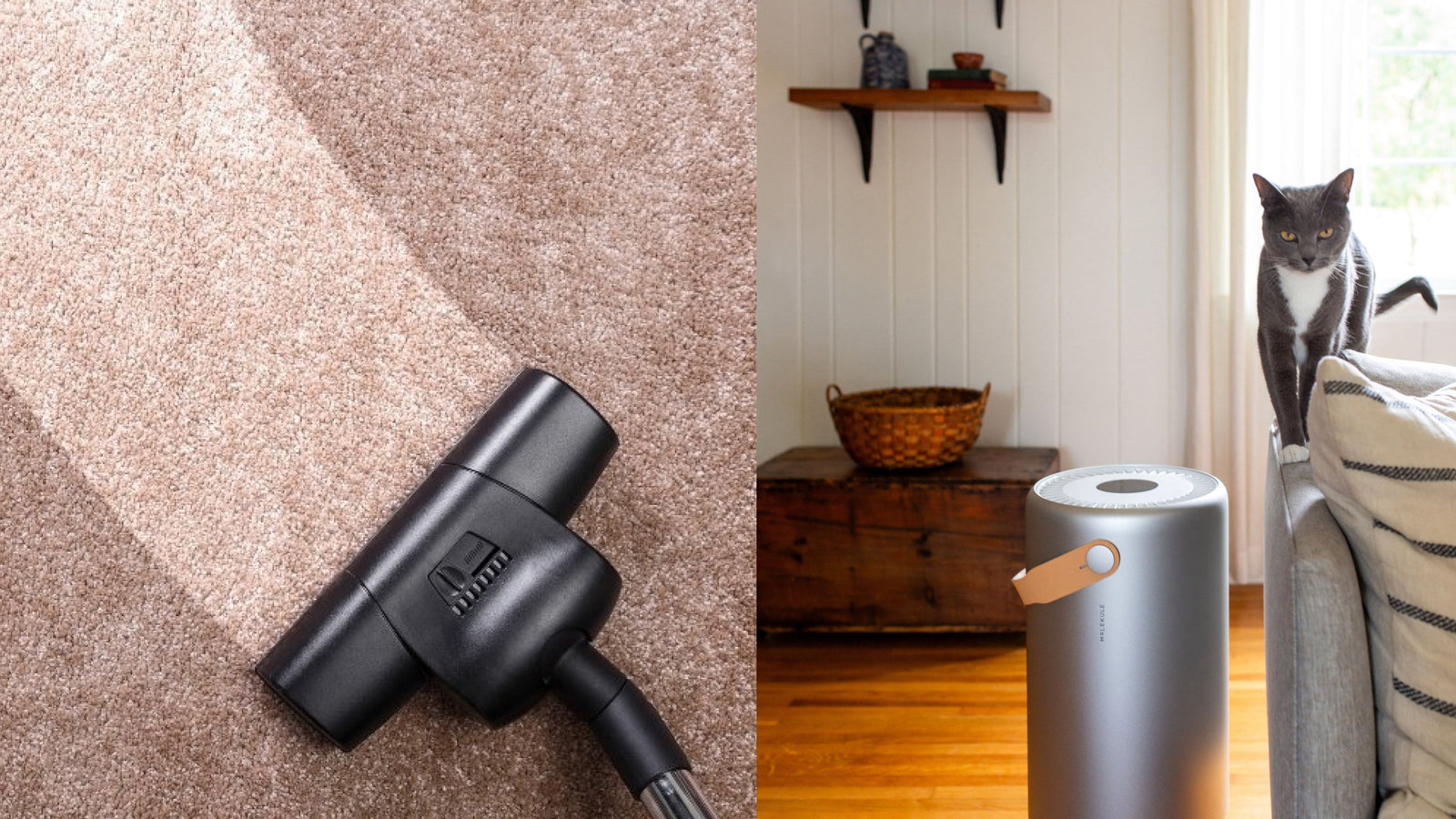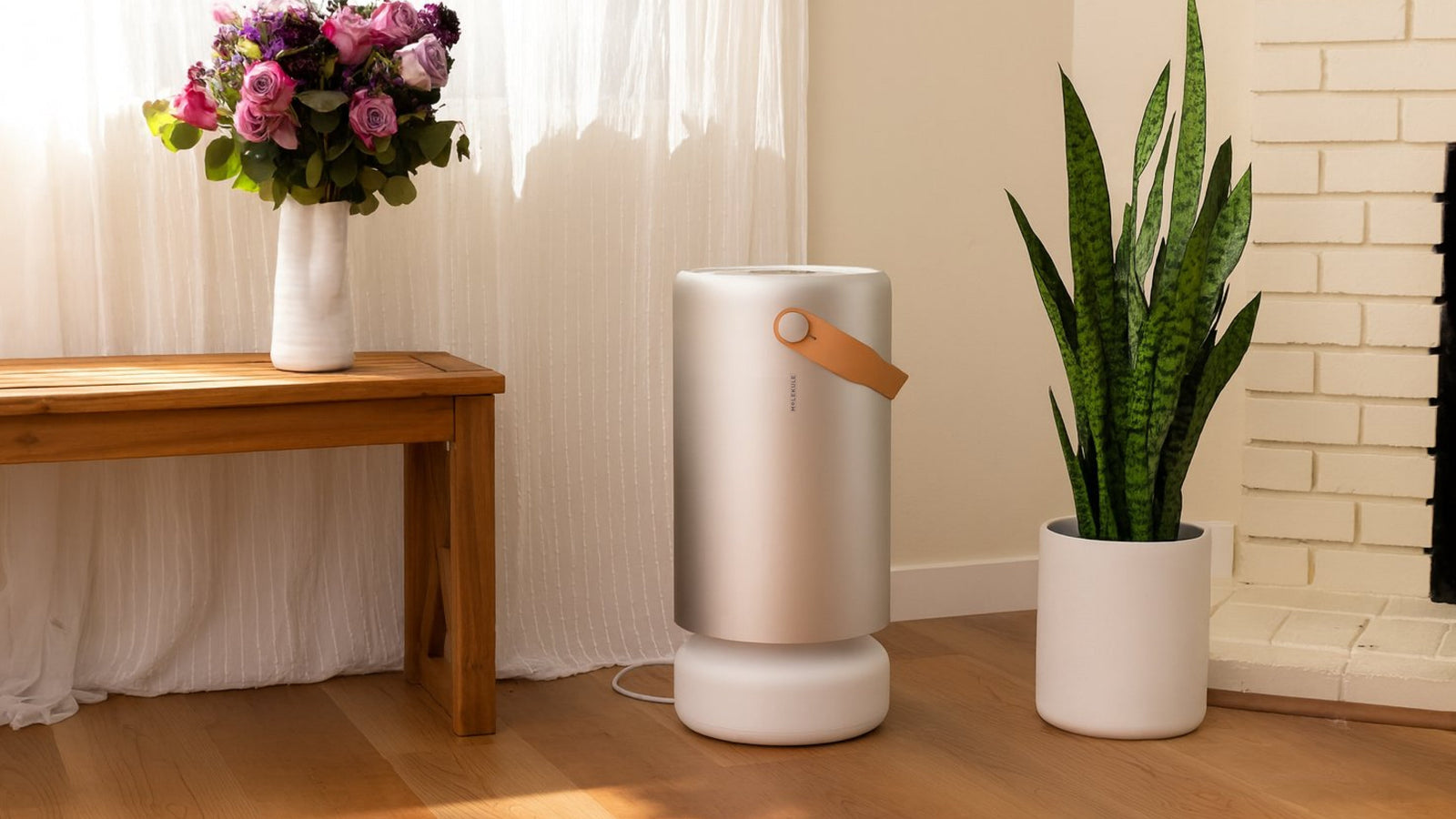Everyone loves the welcome relief of a cool breeze on a hot summer day. When you are indoors, you have to rely on fans (or an air conditioner, which we talk about in another post) to create that breeze for you. Fans can increase airflow in a room and help you beat the heat. However, despite what you may feel, fans alone do not actually make the room any colder.
Let’s take a close look at how fans use evaporation to keep you cool without really changing the temperature of the room, and some of the best ways to get the most out of your fan.
How does evaporation work?
Evaporative cooling is the loss of heat that happens when liquids evaporate. It occurs when hot, dry air comes into contact with liquid water and temporarily lowers the temperature of both the air and the water. This is what causes the cold sensation you feel when you hold a wet finger in the air to test the direction of the wind.
You also experience evaporative cooling when you go inside after being out in the rain, and your wet clothes start to make you feel chilly. Or when you wrap a wet bandana around your neck or forehead to help you stay cool on a hot summer day.
Evaporative cooling happens with all liquids, and those that evaporate faster will create a stronger cooling effect. This is why rubbing alcohol feels colder on your skin than water at the same temperature.
Your body uses evaporative cooling to help regulate your internal temperature. When you sweat, the moisture on your skin helps cool you off as it evaporates. The water in sweat pulls heat from your body when it changes into a gas.
It takes energy to turn water from a liquid to a gas. This energy is called the heat of evaporation. For a molecule of liquid water to become a molecule of water vapor, it needs enough heat energy to break apart from the rest of the water. When it does escape, it takes the heat of evaporation with it and lowers the temperature of the water it leaves behind.

The hotter and dryer the air is, the easier it is for water to evaporate. Wind from fans or other sources can also help speed up the evaporative cooling process. When wind passes over a body of water (or a layer of sweat on your skin), it sweeps away the just-evaporated water vapor and scatters it throughout the room. This lowers the humidity near the water’s surface, making it easier for more water to evaporate.
Why is still air so hot and muggy?
Without a fan or other ventilation, air in a room can start to get stale. When your windows and doors are closed, the air exchange rate in your home decreases. The musty smell we associate with stale, stuffy air is caused by a buildup of airborne contaminants, such as exhaled carbon dioxide and microbial volatile organic compounds (MVOCs).
Without fresh air to dissipate the buildup of airborne pollutants, they can start to accumulate to noticeable levels. Bringing in air from the outside can dilute airborne pollutants and freshen up the air in a room.
Fans can help move the air around and decrease the chances of airborne pollutants accumulating in one area. This increased airflow can also make a room feel cooler because of a process called convection, which is when warm air rises and creates space for cooler air to flow in.
Most of the time, your body temperature is hotter than the air indoors. This causes the air close to your skin to heat up, rising above the average temperature of the room. When you turn on a fan, it starts moving the air around the room. The airflow carries away the hotter air near your skin and replaces it with slightly cooler air, which, in turn, helps you feel cooler.
What is the greenhouse effect and how does it make your home hotter?
People put their plants in greenhouses because their glass walls and ceilings allow them to trap heat from sunlight and maintain warm temperatures after the temperature outdoors starts to fall. This principle also works in other indoor spaces. If you have windows that let in direct sunlight, they may heat the air indoors to temperatures higher than the air outside. Keeping your windows closed after the sun has gone down can trap this heat long after the temperatures outside have fallen.

You can combat this effect by shutting your blinds during the day to keep the sunlight from getting in and heating up your room. Then, after the sun goes down, open a window and place your fan right in front of it. This will bring in cooler air from the outdoors. If you have a second window, you can also put an outside-facing fan in front of it to blow the hot air out and cool the room off even more.
How to use a fan to cool a room
In addition to the two-fan technique described in the previous section, there are a few more tips and tricks you can use to help your fan do the most to cool you off:
-
Create your own “swamp cooler”: Actual swamp cooler units may be pricey, but with a bit of elbow grease, you can harness the cooling principles behind an evaporative air cooler for a fraction of the cost. There are a couple of ways to make a DIY swamp cooler. The easiest is to combine a box fan, an evaporative cooler cooling pad, a bucket, tubing, and a water pump to create a do-it-yourself evaporative air cooler.
If that sounds a little too hands-on, you can achieve a similar effect by freezing a two-liter or gallon bottle of water, covering it with a damp cloth, and putting it in front of your fan. The fan will blow over the wet cloth, causing the chilled water to evaporate and cool the air in the room.
-
Find the perfect placement: The cooling capability of your fan will depend on where you put it. It should be a few feet off the ground where it can mix the cool air near the floor with the hotter air higher up. Make sure the air from your fan has a clear path across the room. Obstructions in front of or behind the fan can impact its ability to circulate the air, and less circulation means less cooling power.
-
Watch where you point it: People can have different preferences on which direction a fan should point. If you have glasses, you may like your fan pointed towards your face. Contacts-wearers, on the other hand, may tend to prefer the fan pointed towards their torsos. Experiment with pointing your fan in different directions to see which produces the most comfortable airflow.
-
Keep your fan clean: House dust can start to build up on a fan’s blades and intake vents. If too much dust accumulates on the fan, it may decrease the speed of the blades, restrict airflow, and put a strain on the fan motor. To keep this from happening, simply wipe off your fan whenever you start to see dust gathering on it.
- Consider a ceiling fan: Ceiling fans require a more significant commitment than standing or box fans, but they can often have a greater cooling efficiency. Plus, they do not take up any floor or counter space, and their longer blades allow them to increase airflow more than a portable fan. Most of them have switches that set their direction to clockwise or counterclockwise. Counterclockwise will push air down, which is best when it’s hot to increase evaporation. Clockwise can help to make you feel warmer when a heater is running because warm air can get stuck near the ceiling. Bouncing the warm air off the ceiling will help it to flow down to where the people are.

Now that you know how and why fans cool you off, you can sit back and enjoy their cooling effects. Whether you lack a central air conditioner or you are trying to save on your electric bill by running it less frequently, a fan can be a significant help in cooling your indoor air. Use the techniques above to get the most use out of your fan and stay comfortable when the weather starts to heat up.







